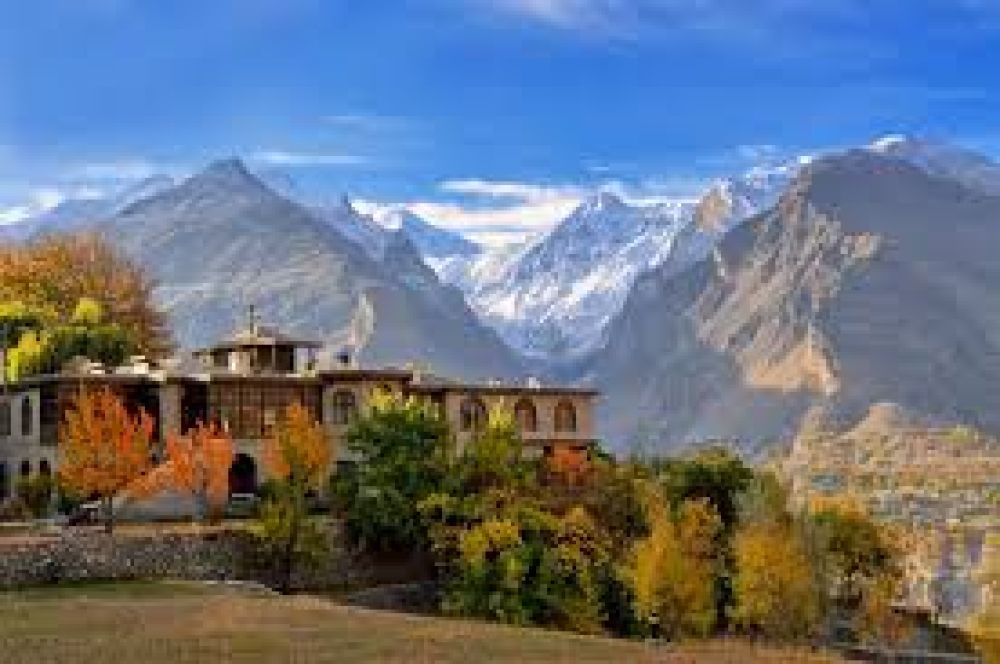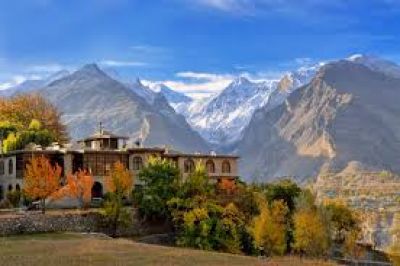

Baltit Fort stands as a historical fortification with over seven centuries of history nestled in the Hunza valley. When travelers arrive at this architectural masterpiece, they are taken back in time to when the Mirs of Hunza used this fort as their residence. An expert guide typically narrates the rich history and heritage of the region as you explore the fort's intricately decorated rooms and enjoy panoramic views of the surrounding Hunza Valley. The fort itself is an amalgamation of Tibetan, Central Asian, and local architectural styles, making for a stunning sight against the backdrop of the Karakoram mountains. Visitors can expect to learn not just about the history, but also about the restoration efforts that have preserved this building for future generations to ponder and study.
Ultar Meadow is a serene spot known for offering some of the most breathtaking views of the surrounding peaks of the Karakoram Range, including Ultar Sar and Ladyfinger Peak. The hike to Ultar Meadow is no easy task and is recommended for those who are physically fit and accustomed to high altitudes. Starting from the village of Karimabad, the trail winds through dense forests, rocky paths, and alongside streams with crystal clear water. This journey lets adventurers closely observe the local flora and fauna of the region. Once at the top, the meadow serves as a peaceful retreat, and the sheer magnificence of the lofty peaks around provides a splendid opportunity for photographers and nature enthusiasts to capture the essence of Hunza's natural beauty.
Altit Fort is one of the oldest monuments in the Gilgit-Baltistan region of Pakistan, sitting majestically above the Hunza River. The fort is over 900 years old and provides a unique insight into the history of the region. A visit to Altit Fort involves navigating through narrow alleyways of a traditional village before reaching the fort, which has been beautifully restored and converted into a museum. The fort's location offers an imposing view of the surrounding mountains and deep valleys. Inside, the preservation of antique furniture, utensils, and traditional clothing gives visitors an intimate look into the lifestyle of the Hunza nobility. The guided tour within the fort usually delves into the history of the region, the Silk Route, and the significance of the fort in the times of past conflicts.
Attabad Lake, a stunning turquoise body of water, emerged as a result of a massive landslide in 2010, which blocked the flow of the Hunza River. Today, it is a popular spot for tourists who come to enjoy the tranquil beauty and partake in a range of water activities. Boating on Attabad Lake is a refreshing experience; the calm waters reflecting the towering mountains around create an almost surreal environment. Visitors have a choice between motorboats and jet skis, offering either a peaceful glide or an adrenaline-packed ride across the lake. The cruise on the lake presents an excellent opportunity for photography, especially early in the morning when the waters are calmest and the reflection of the surrounding landscapes is most clear.
The Eagle's Nest is a lookout point high above Duikar village and offers one of the most spectacular panoramic views in Hunza Valley. Whether you choose to visit for the sunrise or sunset, you are promised a breathtaking scenery where you witness the changing colors of the sky and the light dancing on the peaks of the Karakoram Mountains. The scene is particularly magical when the sun sets or rises over the majestic peaks of Rakaposhi and the Ladyfinger Peak. Getting to Eagle's Nest can be an adventure in itself, involving a drive up a winding mountain road. This experience is a must-do for photographers and anyone looking to have a quiet time appreciating the beauty of nature. Moreover, the nearby Eagle's Nest Hotel is a popular stop for refreshment after soaking in the vista.
Passu Glacier lies near Passu village and is recognized by its white and bluish ice amid a backdrop of towering peaks. The glacier offers a challenging and adventurous trek for those who wish to explore its vast beauty. The uneven terrain and slippery paths demand a good level of fitness and trekking experience. On this journey, trekkers walk through Passu village, witnessing local culture before starting the ascent towards the glacier. Eventually, the full grandeur of Passu Glacier unveils itself as trekkers get up close with the ice formations and pinnacles. The surrounding peaks such as Shispare and Passu Sar overshadow the area and provide a most dramatic setting for hikers. It's an experience that combines both cultural and natural elements of the region, providing a sense of accomplishment upon reaching the viewpoint.
After a day of trekking and exploration, there's nothing quite as soothing as dipping into natural hot springs. The hot springs of Hunza, located near various villages in the valley, are renowned for their therapeutic properties. The most famous ones are the hot springs in the vicinity of Karimabad and Ghulkin village. These springs are said to be rich in sulfur and other minerals, providing health benefits such as improved circulation and relief from rheumatic pains. Locals and tourists alike frequent these springs to bathe and relax. The environment around the springs offers a calm and serene setting, with the sounds of nature adding to the overall therapeutic experience. It's an ideal way to end your adventurous day by immersing yourself in the warm waters as you gaze at the starry night or the majestic mountains.
Karimabad Market in Hunza is a bustling center of culture and commerce. Here, visitors can browse through a myriad of shops offering traditional handicrafts, gemstones, carpets, and souvenirs. The market offers a glimpse into the colorful and rich artisan traditions of Hunza. As you walk through the market, the scent of fresh local fruit and the sight of handcrafted wooden artifacts catch your senses. Shoppers can find exquisite pieces of embroidery, local jewelry, and clothing that reflect the skills and culture of the indigenous people. Buying from these local markets not only provides visitors with unique mementos but also supports the local economy. While shopping, one can also indulge in local street food, which is a delightful experience for the palate.
The Sacred Rocks of Hunza are an important historical and archaeological site located in the village of Haldeikish. These rocks are adorned with ancient inscriptions and carvings that date back to the time when the Silk Route was in full use. A visit to the Sacred Rocks allows one to see firsthand the messages and drawings left by various travelers and rulers over the centuries. They provide invaluable insights into the lives, beliefs, and interactions of those who passed through this region. These etchings range from elaborate sketches of ibex to scripts in Kharosthi, Brahmi, Sogdian, and other languages. Visitors should take the opportunity to engage with local guides who explain the historical context and significance of these inscriptions, enhancing the overall understanding of this open-air treasure trove.
If you're an adrenaline junkie, rafting on the Hunza River offers an exhilarating experience amidst spectacular scenery. The river, fed by glaciers, runs through the valley offering Class II to Class V rapids, depending on the season and specific sections of the river. Visitors can embark on guided rafting trips that ensure all safety measures are adhered to, including the provision of helmets, life jackets, and a skilled guide. As you navigate through the powerful currents and rapids, the thrill of the adventure is matched only by the stunning views of the surrounding mountains and cliffs. Rafting in Hunza is more than just a sport; it's an opportunity to experience the raw power of nature while getting an unconventional view of the breathtaking Hunza valley.
